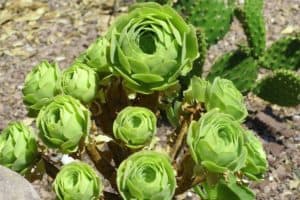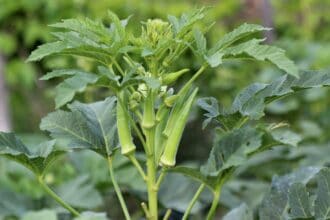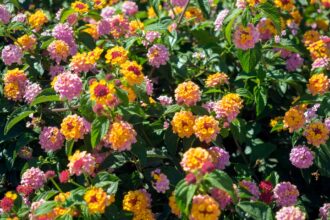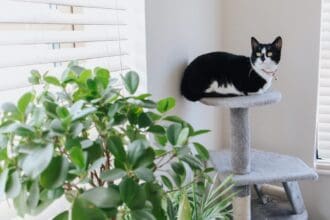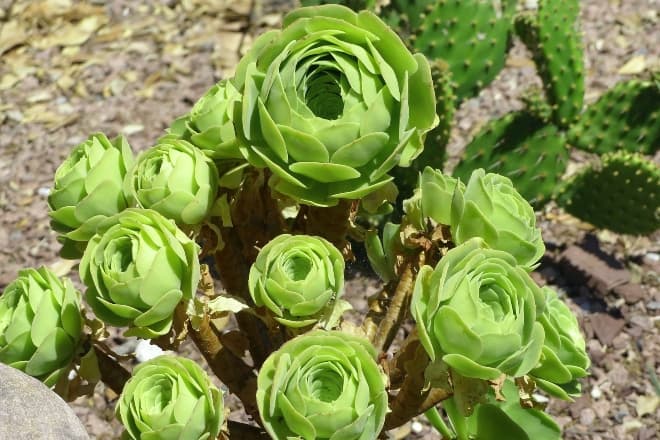
via: Pixabay / Hreisho
Rose succulents are absolutely stunning and much easier to care for than real roses. That makes them perfect for gardening newbies, people with busy schedules who don’t get to spend a lot of time at home, or just about anyone who appreciates unconventional-looking plants.
That said, don’t expect your plants to take care of themselves. They still need your help. So, if you get one of these little beauties, you’d have to learn how to care for succulents in general — and rose succulents in particular.
What Is A Rose Succulent?
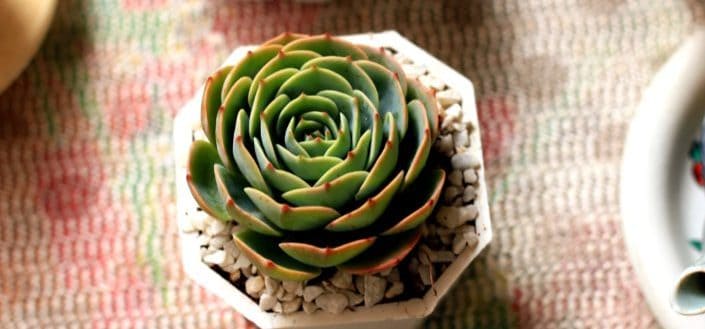
via: Unsplash / Antonio Castellano
There are over 60 different succulent families and more than 1,000 known succulent species in the world. They come in all sorts of shapes and sizes — but you can always tell a rose succulent apart due to its unmistakable rose-like form.
Greenovia dodrantalis is a perennial rose succulent that has layered leaves and a curved shape. The species is native to the Canary Islands, a Spanish archipelago off the coast of Morocco in northwestern Africa.
Greenovias prefer coniferous forests and can be found on rocky crevices, canyons, and mountains — hence the nickname “mountain roses.” Unfortunately, wild Greenovia dodrantalis is now endangered due to overcollection, as well as tourist activities encroaching its natural habitat.
A fully mature plant can grow up to 2.4–6 inches (6–15.2 cm) in height — just about the size of an actual rose. The stalks of the individual offsets can reach up to 3.2 inches (8.1 cm), and the rosettes are urn- or cup-shaped and can grow up to 2.4 inches (6 cm) in diameter.
The leaves of Greenovia dodrantalis can measure up to 1.4 inches (3.5 cm) in length and 0.6 inches (1.5 cm) in width. They are smooth, fleshy, oval or paddle-shaped, and have a distinctively waxy surface. Color-wise, they are grayish-green but may develop a rose tinge at the edges.
The petals are tightly packed, closing even more tightly during the dry season. However, as the plant matures, older petals may start to pull away from the main body.
Why Is Knowing How To Grow And Care For Rose Succulents Important?

via: Pexels / mentatdgt
Greenovia dodrantalis are low-maintenance and hearty plants, which makes them ideal for inexperienced owners. However, they still have their requirements, and you risk damaging or even killing those gorgeous succulents if you don’t look after them properly.
How To Grow Rose Succulents (Greenovia Dodrentalis)
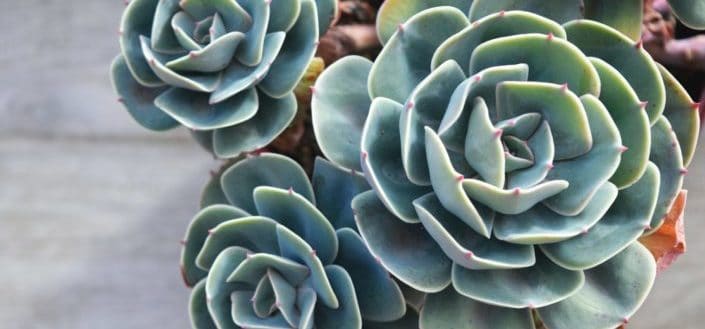
via: Unsplash / Steffi Pereira
Follow the steps below so you can successfully grow these beautiful rose succulents.
1. Make Sure You Have The Right Type of Succulent
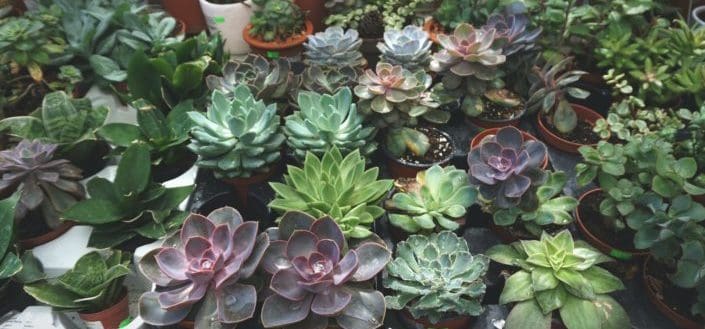
via: Unsplash / Victoria Strukovskaya
As we mentioned earlier, there are over 1,000 types of succulents, including many rose-shaped indoor succulents. So, the first thing you want to do is to make sure that you have purchased a Greenovia dodrantalis and not some other plant.
However, to make things even more complicated, Greenovia dodrantalis is not the only scientific name for this species! It’s also known as Aeonium dodrantale.
This double-naming is due to a reclassification of the plant’s taxonomy, which is not uncommon in botany. The problem is that this type of succulent is sold under both names, so don’t be confused if you see either one (or both!) on the tag.
2. Get A Proper Pot
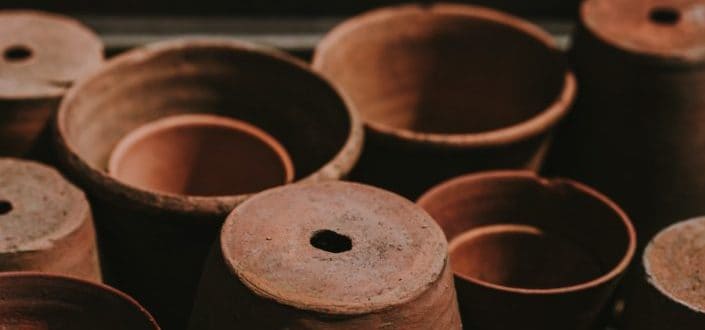
via: Unsplash / Annie Spratt
If you live in a warm to a mild climate, such as southern and coastal California, you can plant your Greenovia dodrantalis directly in the ground.
Alternatively, you can plant it in a pot. In that case, make sure to get one with a drainage hole — otherwise, the roots will rot as a result of the excessive moisture in the soil.
3. Get The Right Soil Mix
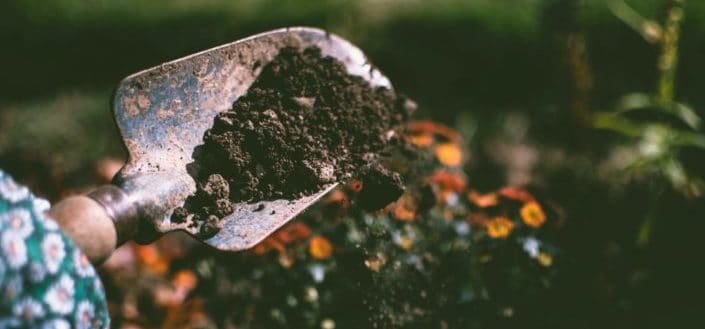
via: Pexels / Lisa Fotios
Getting the soil mix right is crucial. For best results, you want a fast-draining soil mix that will prevent root rot and protect the plant from overwatering.
You can use standard, store-bought soil mix for succulents and cacti and throw in some more perlite to improve its drainage capacity. Stay away from organic matter such as coconut coir or peat moss. These tend to retain water and keep the soil moist for longer.
4. Know How To Water Your Greenovia Dodrantalis
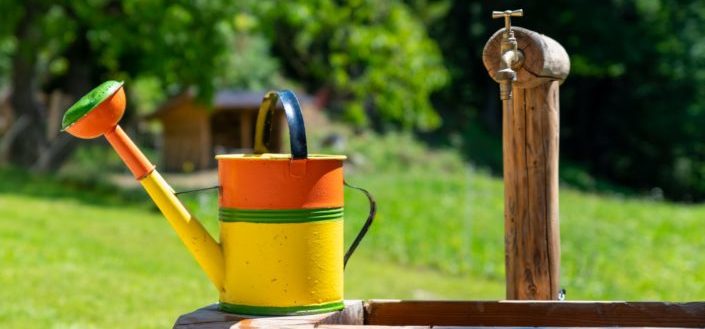
via: Unsplash / Robert Hrovat
If you already know how to water succulents, you should get the hang of this pretty quickly.
The good news is that the risk of overwatering Greenovia dodrantalis is fairly low. This species needs a little more water than most other succulents and can tolerate wet soil for much longer.
You should water your plant every couple of days in the summertime. During the colder months, water it once every week or two weeks — or as soon as the topsoil layer dries completely or is only barely moist. Test the soil by poking your finger down an inch or two.
Whether your Greenovia dodrantalis is in the ground or in a pot, the watering technique is the same. You want to thoroughly drench the plant and let it sit for a few minutes. However, you should make sure that it is not sitting in water between waterings and discard any water that collects in the saucer.
5. Ensure The Plant Has Access to Enough (But Not Too Much) Light
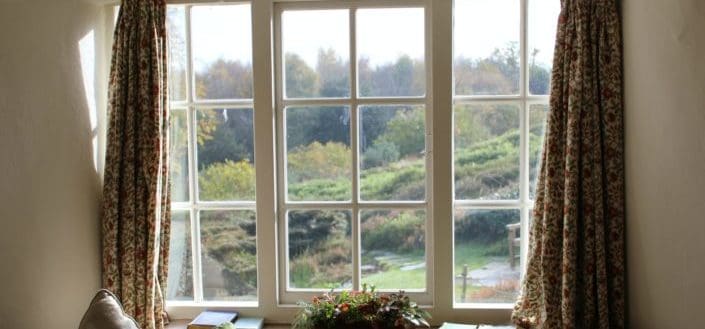
via: Unsplash / Rob Wingate
Greenovia dodrantalis love warm, brightly lit locations — but not direct sunlight. They are prone to sunburn and should be kept out of intense light. What’s more, they will close their rosettes to protect them when placed in direct light, so you won’t get to enjoy seeing them in “full bloom.”
The best placement for an indoor plant is near a window. However, avoid placing it directly in full sun all day. This type of succulent also develops well under a grow light, so that’s definitely an option if you don’t get enough natural light in your home.
You can also move your Greenovia onto a patio, balcony, or some other bright spot in the summer months, but make sure to allow the plant to adjust gradually to the outdoors. Keeping it indoors near an open window for a few days should do the trick.
And if you are hoping that your Greenovia dodrantalis will turn pretty colors when exposed to plenty of light — like many other succulents do — you are in for a disappointment. This species will stay green through-and-through, with maybe just a slight tinge of pink toward the edges.
6. Set The Temperature Right
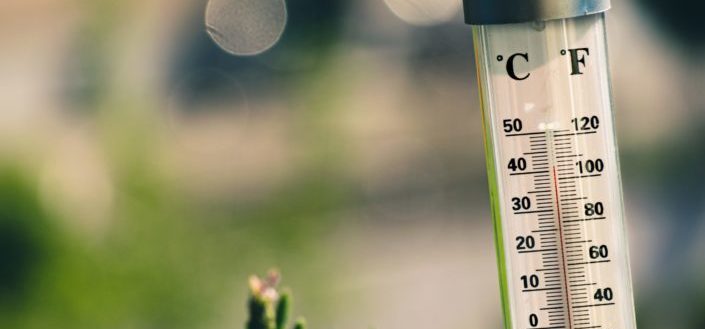
via: Unsplash / Jarosław Kwoczała
Rose succulents like climates that are neither too hot nor too cold. A temperature range between 40ºF (4.5ºC) and 100ºF (38ºC) is ideal. These plants also don’t thrive well in environments that are too dry: a subtropical climate generally works best.
7. Learn How To Propagate Rose Succulents
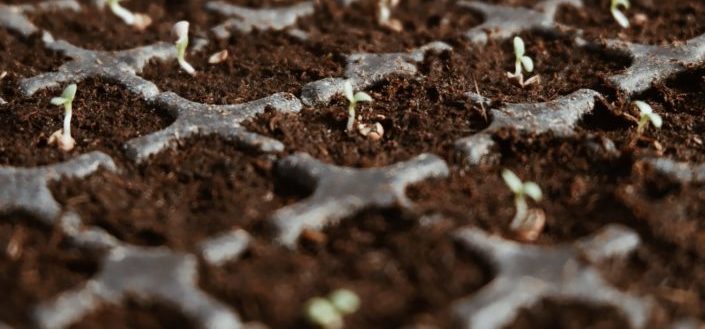
via: Unsplash / Devi Puspita Amartha Yahya
Perhaps the most important skill when it comes to looking after Greenovia dodrantalis is knowing how to propagate succulents.
While you can wait for your Greenovia to flower and then collect and plant the seeds, you would have to wait years for the new plant to grow into any identifiable form. If you choose to go down this route, make sure to sow the seeds indoors and in shallow trays. Use a spray bottle to water the seedlings at first. You can transfer them to deeper, well-drained containers when they develop several sets of leaves each. For best results, use gritty potting soil.
That said, a much easier way to plant new Greenovias is by propagating them. However, unlike with other succulents, leaf propagation is not very effective here.
Instead, let the plant do all the work and self-propagate! A healthy Greenovia dodrantalis will naturally produce babies called offsets or pups. When they grow to about an inch in diameter, use a sharp knife to gently cut them off at the base of the parent plant.
Let the cuttings sit out for one or two days and then sow them in clean soil. In about a week, they will grow roots, and you can start watering. Until then, though, keep the soil mix on the dry side. Look after the pups as you would a fully mature plant.
Want to know the best part? Greenovia dodrantalis are in high demand, making those young pups great gifts for family and friends — simply plant them in fancy pots, and voila! You’ve got yourself perfect housewarming gifts. You can even start selling them!
8. Manage Your Expectations When It Comes To Flowering
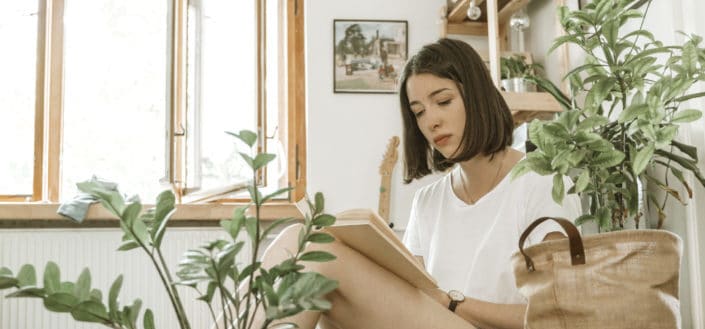
via: Pexels / Alina Vilchenko
There’s nothing more beautiful than a flowering succulent. However, you might not get to see your Greenovia dodrantalis in full bloom.
Not only is this an infrequently flowering species, but there is evidence that it might be monocarpic. That means it flowers only once in its lifetime, after which it will set seed and die.
Fortunately, Greenovia dodrantalis are gorgeous enough as it is.
9. Know When To Fertilize Your Rose Succulents
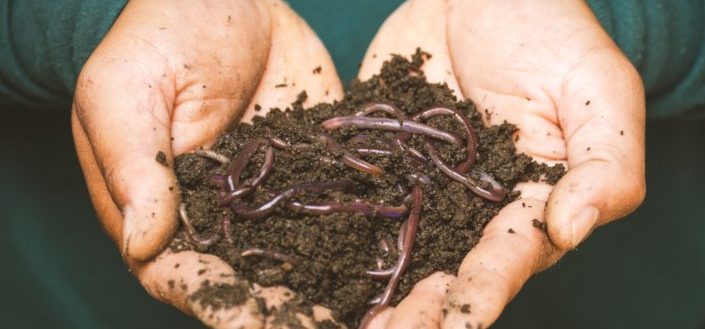
via: Pexels / Sippakorn Yamkasikorn
Early spring is the best time to fertilize your Greenovia dodrantalis. A standard succulent and cacti fertilizer should do just fine — just don’t overdo it and be sure to follow the manufacturer’s instructions. You should also add some half-strength fertilizer at the start of the growing season in October or November.
10. Take Action Against Pests As Soon As You Spot Them
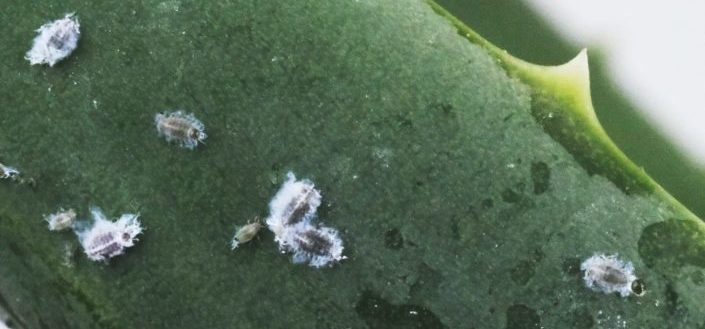
via: Unsplash / Severin Candrian
Make sure to check your plant for insects and other pests on a regular basis. If you spot any, take action immediately. This is especially important if you plan to transfer your plants back indoors any time soon. If you don’t deal with the pest problem effectively, they will hitchhike onto your other houseplants.
11. Know When to Repot Your Rose Succulents (Greenovia Dodrantalis)
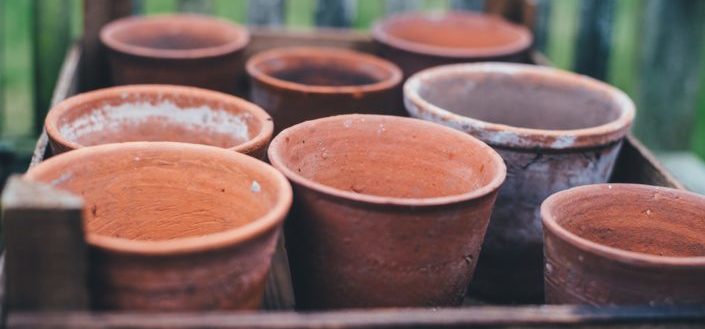
via: Unsplash / Annie Spratt
As a result of thumb, you should repot your Greenovia dodrantalis once every few years. However, bear in mind that they like to be crowded, so don’t overdo it, and don’t transfer the plants into a pot that is a lot larger than the old one.
More Awesome Succulents
Rose succulents are awesome — but did you know that there are many other funny-looking succulent species out there?
- Make sure to check out the Kalanchoe tomentosa, also known as the panda plant.
- And then there’s this article about how to grow burro's tail, Sedum morganianum or donkey’s tail!
- Don’t forget to also have a look at our selection of gorgeous outdoor succulents.
In Conclusion
Whether you have a green thumb or not, rose succulents should make for a trendy and low-maintenance addition to your home. And now that you know how to care for succulents, you can start growing your very own collection of those prickly but super cute little fellas.


